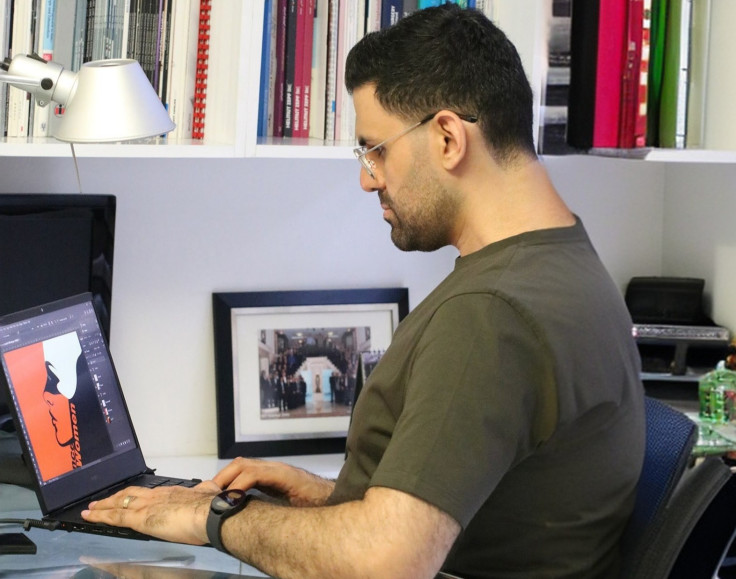Use Silence to Expose What the World Forgets
Iranian designer Vahid Mirzaei uses design to speak where words cannot

In Iran, where expression is restricted and the economy bears down on every creative endeavour, design has quietly become one of the most resilient forms of testimony. In the hands of one independent artist, visual communication has shifted away from aesthetics and toward something closer to forensic witnessing. His posters, book covers, and campaigns avoid slogans, spectacle, and commercial appeal. Instead, they preserve memory. Not a heroic memory, but fragile, unfinished, and often fading.
Some of this work has quietly found its way into international exhibitions and juried showcases. But what gives it weight isn't exposure. It's the context behind it. Made without backing, often with basic tools and whatever resources are available, the work carries the texture of its own limitations. Every decision feels sharpened by constraint, not diluted by it. That pressure doesn't diminish it. If anything, it sharpens the focus; the images feel deliberate, urgent, and emotionally exact. The act of continuing this work under such conditions is not just creative — it is political.
In this body of work, extinction is not only biological. It is linguistic, cultural, and ethical. A vanishing species appears in the form of a faint outline, but it might just as easily stand in for a lost idea, a buried history, a silenced voice. Across multiple series, motifs recur: Birds without wings, suns without warmth, broken grids, absent faces. These are not decorative choices. They form a visual vocabulary for loss. Design, in this context, becomes a practice of observation. It is not used to propose solutions or offer comfort. It documents what has been allowed to disappear, what remains unresolved, and what no longer shocks the public conscience. It speaks of war without depicting combat. It deals with violence without needing to show a weapon. The impact often comes from what isn't shown, what's only hinted at.
This isn't minimalism for style's sake. It's not about chasing clean lines or abstract beauty. It's a careful, often necessary decision shaped by where the work is made. In Iran, even subtle references to politics, religion, or social realities can cross a line. Artists learn quickly that clarity can carry consequences.
The ambiguity in these works is therefore not evasive. It is protective. It allows space for interpretation while resisting easy categorisation.
What also defines this practice is its pace. In a global design culture that favors speed, trend, and immediacy, these works develop slowly. They are conceived through months of research, reading, and revision. The final images rarely change rapidly. Instead, they accumulate meaning over time. They reward repeated viewing, not passing engagement.
Economics plays a central role. Sanctions have cut off access to basic creative tools. Software is often pirated or blocked. Hardware is outdated. Even importing paper or ink can be prohibitively expensive. In this setting, producing work that is both technically sound and conceptually rich is a form of defiance in itself. Despite these barriers, some of the work has appeared internationally. Exhibitions and awards abroad have brought brief visibility, but they have not transformed the local landscape. There is no support system for artists working outside commercial or official channels. What emerges is a practice of deep self-reliance, where artistic clarity is maintained without compromise.
The most compelling aspect of this work is its refusal to ask for attention. It does not campaign. It does not seek virality. It waits. Its silence is deliberate, and its restraint is what gives it weight. In a cultural moment overloaded with noise, these images offer the opposite. They create space to think, to remember, and perhaps to grieve.
This kind of design does not fit neatly into international categories. It is not humanitarian branding, nor is it poster activism in the traditional sense. It is slower, quieter, and ultimately harder to commodify. That may be why it remains marginal. But it is also why it matters.
The artist behind it has said little about his own biography. He prefers the work to speak for itself. And it does. Through absence. Through balance. Through symbols that feel at once personal and universal. In a country where forgetting is often safer than remembering, to insist on memory is not only artistic — it is radical.
© Copyright IBTimes 2025. All rights reserved.





















